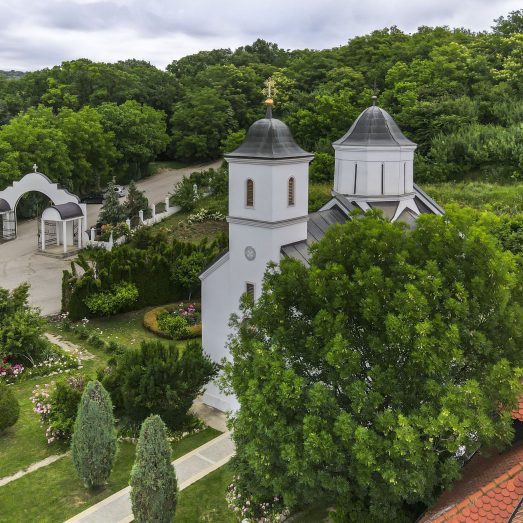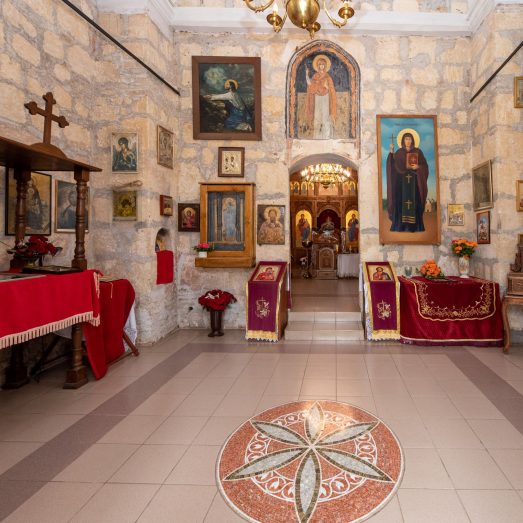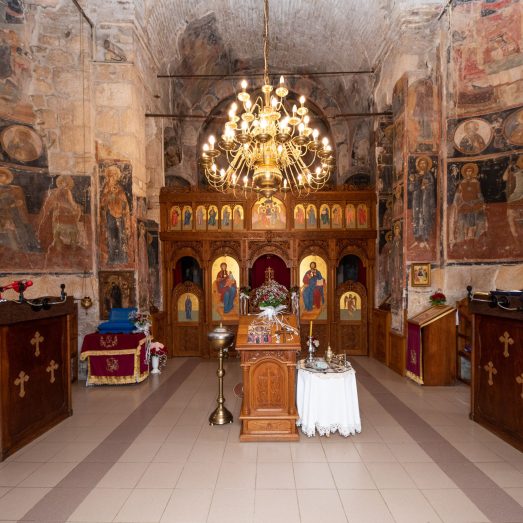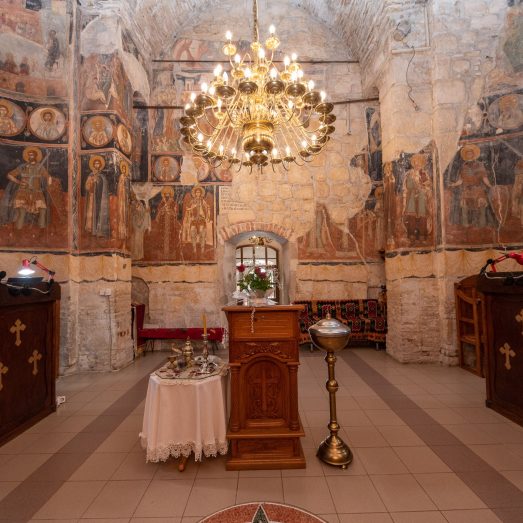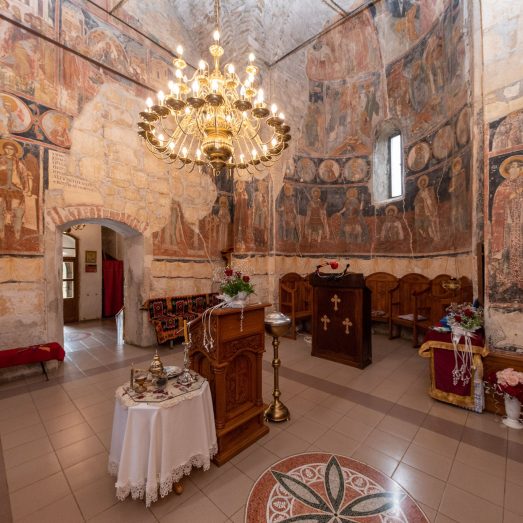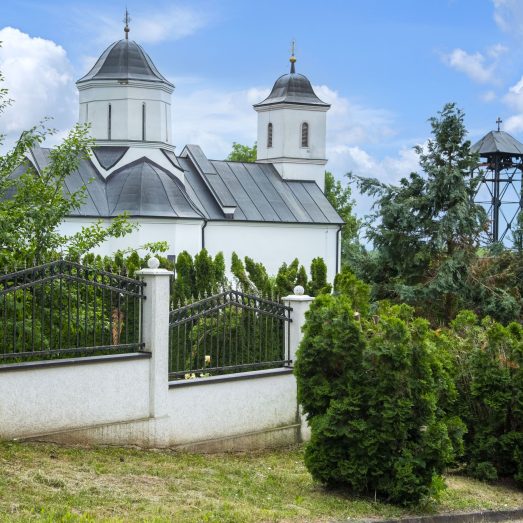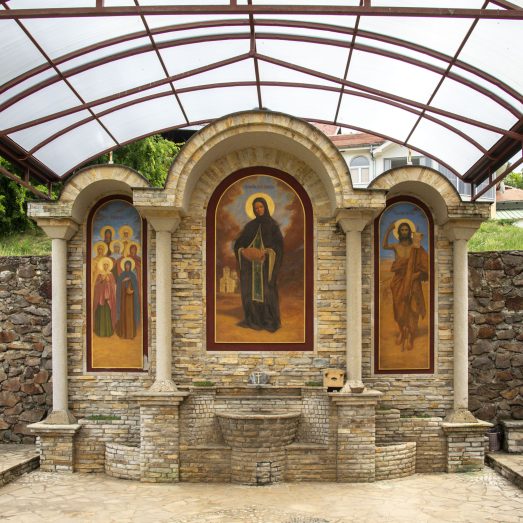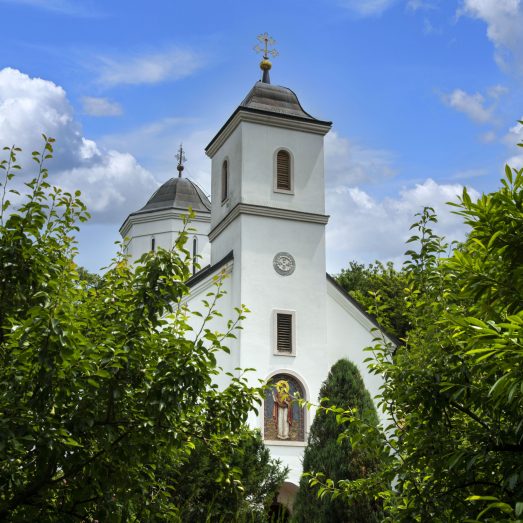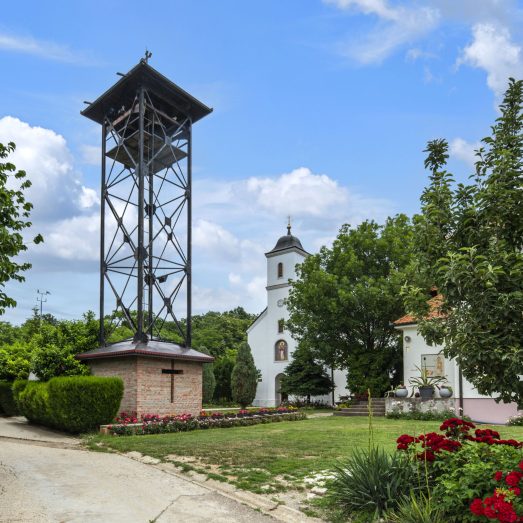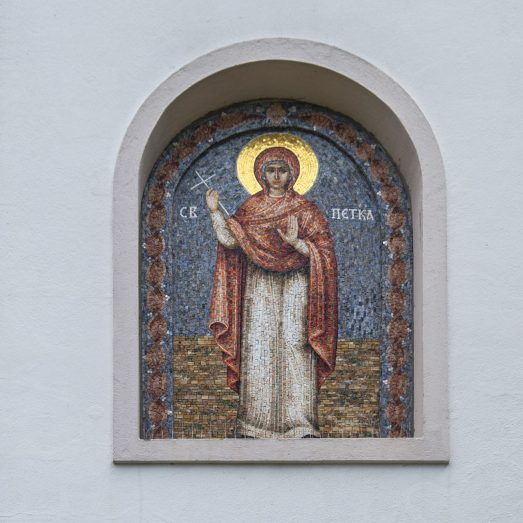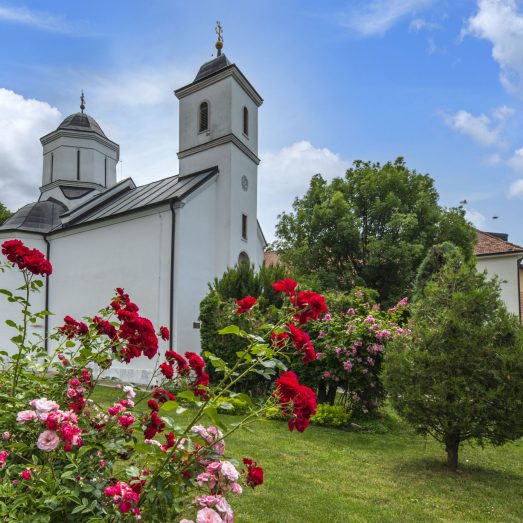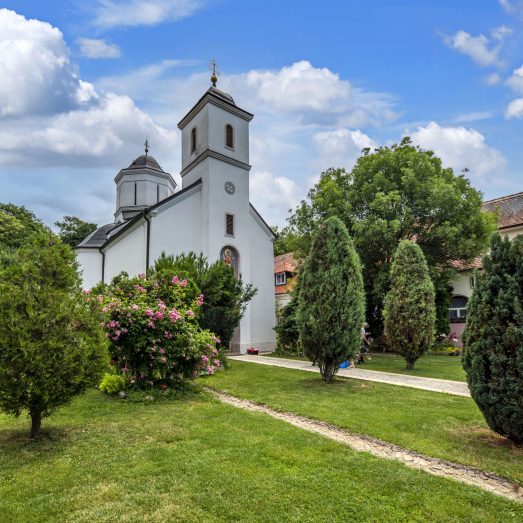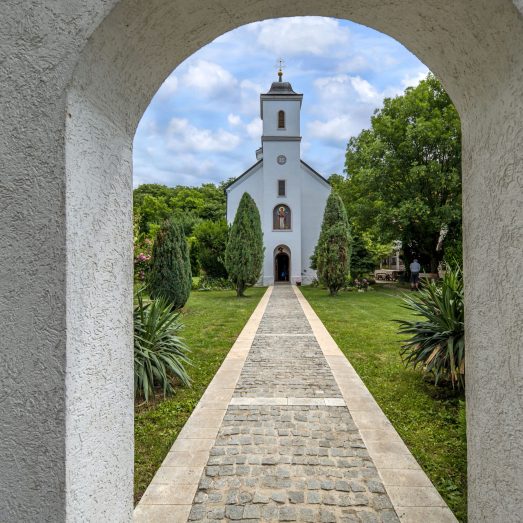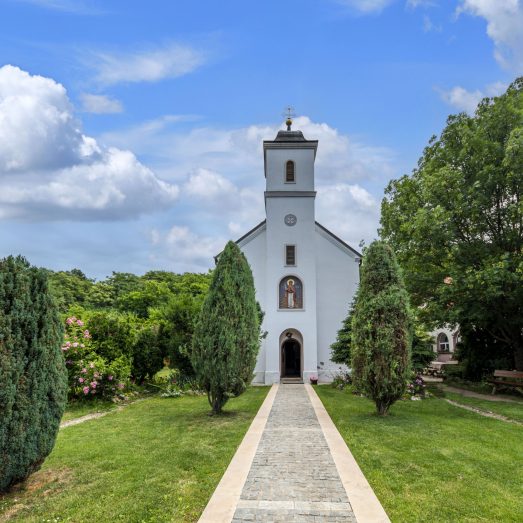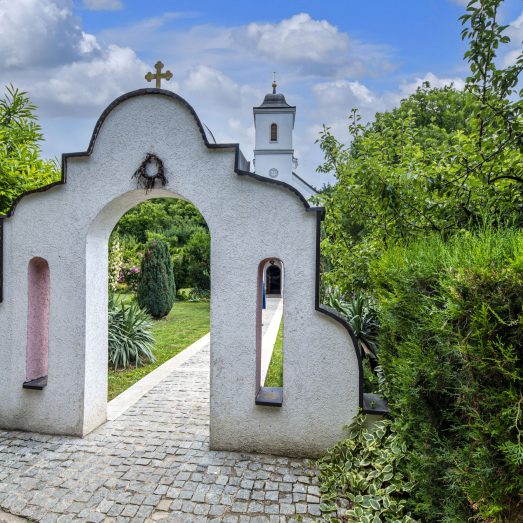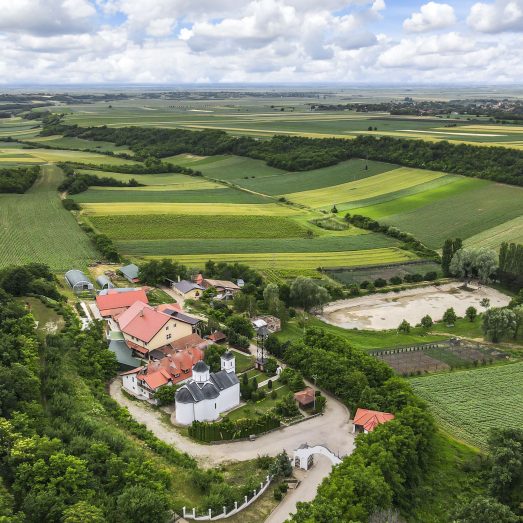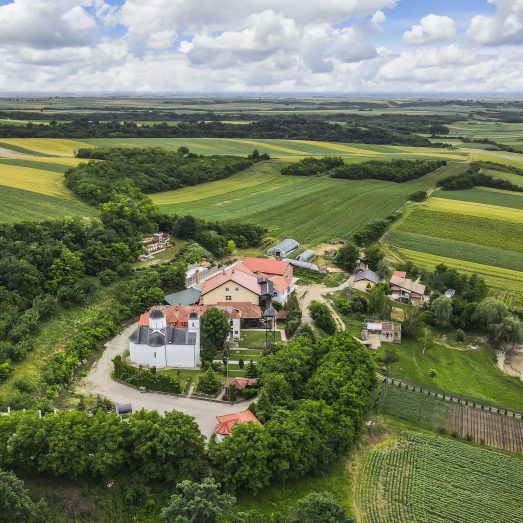The monastery church is dedicated to St. Petka (St. Petka, Paraskeva of the Balkans) (October 27)
According to lore, the Petkovica Monastery was built in the first half of the 16th century by Jelena, the widow of Despot Stefan Štiljanović, as an endowment in which she became a nun. The first written information about the age of the monastery is the year of its fresco painting – 1588, recorded on the wall of the temple. There is also the knowledge that in the 17th century, during the rule of the Ottoman Turks of Srem, Sinan Bey wanted to demolish the desolate monasteries of Petkovica and Kuveždin and use the building materials to build his residence in Sremska Mitrovica. Using monetary funds Serbian Patriarch Pajsije managed to prevent this plan and preserve the monasteries. It is also known that since the middle of the 18th century, Petkovica was the metochion of the Šišatovac Monastery, that the monastery church had an iconostasis and church inventory such as icons, vestments and books. In the centuries to come, historical circumstances have influenced the change in the condition of monastery buildings and property, but it will turn out that, compared to other Fruška Gora monasteries, the church of the Petkovica Monastery has largely preserved its original appearance.
In the 1920s, the monastery was abandoned for a long time and collapsed due to neglect. Its comprehensive restoration began at the beginning of the 21st century, with the arrival of Hegumeness Antonina. The monastery konaks are of a more recent date. The pareclession of St. Photina with Jacob’s well and souvenir shops were built, and at the spring of St. Petka, a chapel dedicated to St. Petka and Mary Magdalene. There is also stoked lake in the monastery property.
The wall painting of the monastery church is the work of three Žiča monks from the end of the 16th century, from the time of Hegumen Akakije. The fresco painting, of undeniably great value, is a representative of Serbian late medieval church art, preserved in Fruška Gora thanks to the cultural ties with the central Serbian territories that were never broken. Part of the wall painting in the altar semi-apse stands out for its beauty, depicting the Virgin Mary (Bogorodica) with Christ and the archangels Michael and Gabriel (Mihajlo i Gavrilo).
The iconostasis from the first half of the 18th century, which was donated to the monastery by Milenko Vučković, was destroyed during the Second World War. A cross from the iconostasis (now in the Museum of Church Art in Sremska Mitrovica) and two icons (now in the Museum of the Serbian Orthodox Church in Belgrade) have been preserved. The contemporary iconostasis from the second decade of the 21st century was carved by Milorad Jovančić and painted by Borka Jovančić.
In addition to the temple patron saint’s day, the monastery celebrates the Sunday of the Myrrhbearer (Nedelja Mironosica) (the third week from Easter) and the Sunday of the Samaritan Woman( Nedelja Žene Samarjanke) (the fifth week from Easter). The Samaritan Woman’s Encounter with Jesus ( Susret Isusa sa Samarjankom) (Photina in the Orthodox tradition) at Jacob’s well (Jakovljev bunar), recorded in the Gospel of John, has great significance in the monastery.
Liturgy schedule: Saturdays and Sunday mornings, vigils are on Saturdays.
TOURIST INFORMATION: The appropriate way of dressing is implied (for women covered head, long skirt, long sleeves, and for men long trousers and shirt). The tour program for the contracted groups may include: a tour of the monastery church and an introduction to the history of the monastery and the church, a tour of the parecclesion of St. Photina, souvenir shops, and if so agreed – catering. You will receive all the necessary information when you announce your visit. Group visits to the monastery are best announced two days in advance via phone number: +381 (0)60 044 91 05 (Hegumeness Antonina Simić).
